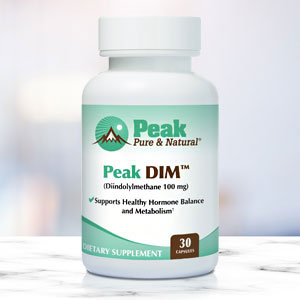Carrying extra weight is bad for the heart. Being obese is even worse. And in the U.S., obesity-related heart disease deaths have increased over the past two decades.
An analysis of 21 years of data presented late last year at the American Heart Association’s Scientific Sessions 2024 paints a grim picture…
The analysis found that there was a significant and consistent increase in deaths from obesity-related ischemic heart disease from 1999 to 2020 in the U.S.
Ischemic heart disease is a condition that occurs when the heart’s blood supply is reduced due to narrowed coronary arteries.
Specifically, the analysis revealed an increase of 243% annually in deaths among men and 131% in women.
The highest rates of deaths from ischemic heart disease related to obesity were among middle-aged men ages 55-64, Black adults and people who live in the Midwestern states and non-metropolitan areas in the U.S.
With numbers like that, and on the climb, let’s talk about why obesity drives heart problems, the type of fat that does the most harm and what to do about it…
How obesity contributes to heart disease
Three factors make obesity a driving force behind heart disease:
Cholesterol levels. Being obese can cause your LDL (“bad” cholesterol) levels to rise. It also elevates triglyceride levels. Not only that, it actually can lower HDL (“good” cholesterol) levels at the same time.
Blood pressure. A person who is obese requires more blood to supply oxygen and nutrients to their body, which can lead to increased blood pressure. And high blood pressure is a common cause of heart attacks.
Diabetes. Obesity puts you at high risk for developing diabetes. And according to the American Heart Association, at least 68 percent of people aged 65 and older with diabetes also have heart disease.
These conditions are also three of the five markers for Metabolic Syndrome (MetS) — and three is all you need for a diagnosis. Another marker is having a large waist circumference — in other words, visceral belly fat.
How visceral fat fuels heart disease
If you are obese and carry a lot of fat around your midsection, you are pretty much a heart attack waiting to happen.
So why is merely carrying fat around the mid-section so dangerous?
According to Dr. Elizabeth Klodas, cardiologist and EHO contributor, visceral fat is like an organ that is “biochemically active.” That means it’s not just “passive fat.”
It can disrupt the healthy function of various hormones, like insulin, impact metabolism, inflammation and organs… leading to an increased risk of heart disease.
Visceral fat also produces chemicals called cytokines that have negative effects on blood pressure and blood clotting. Visceral fat is directly linked with higher LDL (bad) cholesterol and lower HDL (good) cholesterol levels.
All of this increases the risk for ischemic heart disease.
How to lose the fat that contributes to heart disease
You won’t be surprised to hear that diet and exercise are necessary to lose visceral fat. However, I do have a simple tip to help you start chipping away at it…
According to researchers at the University of Illinois Urbana-Champaign, start by eating an avocado a day.
Their study followed 105 overweight or obese adults for a full 12 weeks.
Half were asked to eat an avocado at one meal a day, while the other half ate meals with the same number of calories and nearly identical ingredients, just without the avocado.
And the results showed:
- Women who consumed an avocado as part of a daily meal had a reduction in deeper visceral abdominal fat.
- They also experienced a reduction in the ratio of visceral fat to subcutaneous fat, indicating a redistribution of fat away from their organs.
The researchers say that together, these two findings demonstrate the power of avocados to not only reduce visceral fat but also to ward off the diseases it can cause.
However, fat distribution in males did not change. That doesn’t mean the guys are out of luck. Consider the Green Mediterranean diet…
It’s similar to the traditional Mediterranean diet, but ramps up the green factor by requiring three daily components: green tea, walnuts, and a shake made with duckweed (an aquatic green plant high in protein, iron, vitamin B12, and polyphenols).
In one study, this green diet version lowered blood pressure, insulin resistance, and inflammation, and improved the ratio of good to bad cholesterol.
Another found it doubles the belly fat loss of people following the traditional form of the diet. In this particular study 88% of the participants were men.
Don’t forget, exercise is an important part of weight loss but can be hard to jump into for someone who’s obese. Consider consulting a doctor or a weight loss trainer for additional support.
In addition to doing the right things to lose weight, be wary of these 12 habits that pack on dangerous belly fat.
Sources:
Obesity-related heart disease deaths increased in the U.S. over the past two decades — Eureka Alert
Three ways obesity contributes to heart disease — Penn Medicine
Significant gaps between the science of obesity and the care patients receive — heart.org
Avocados change belly fat distribution in women, controlled study finds — Science Daily
Read full article here




